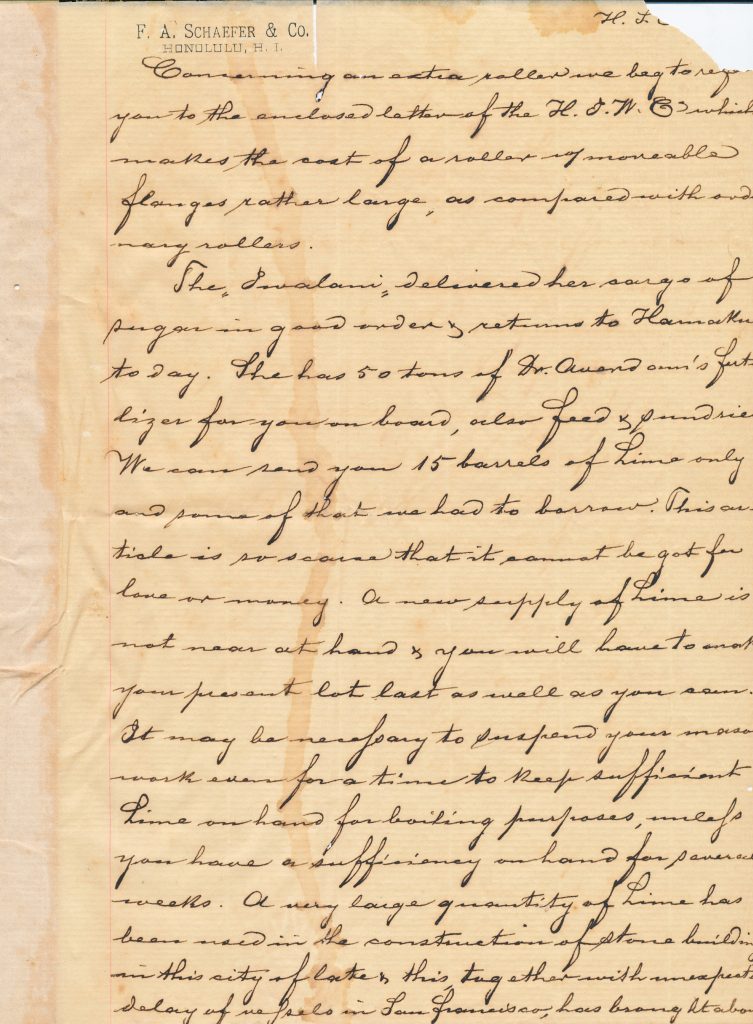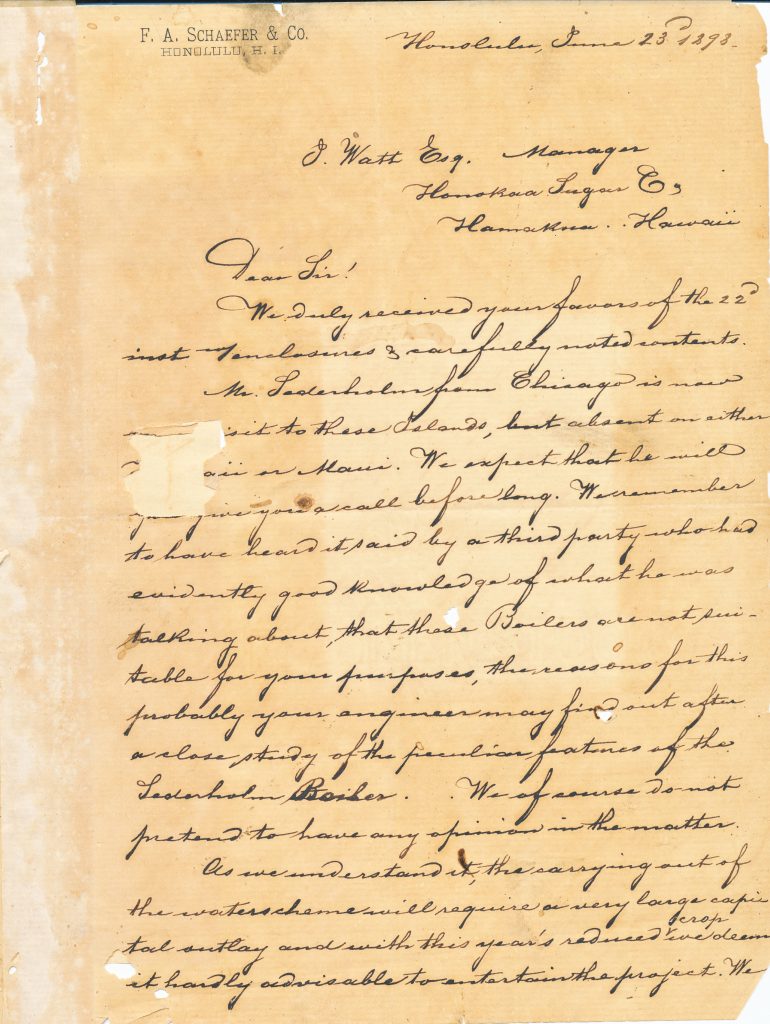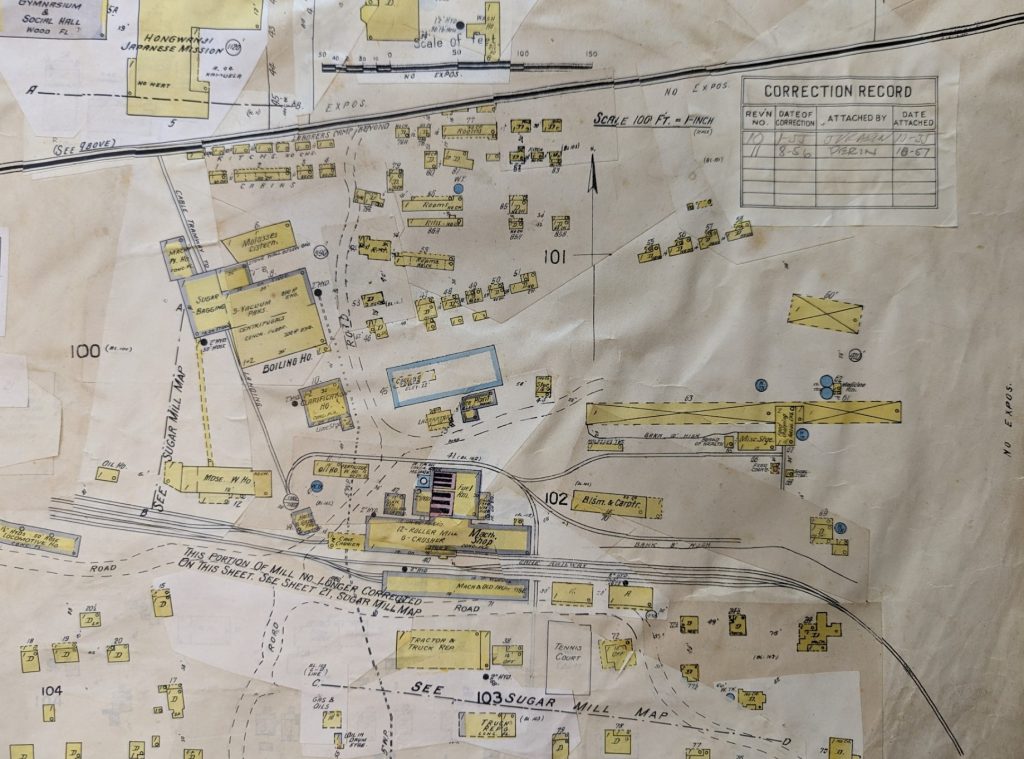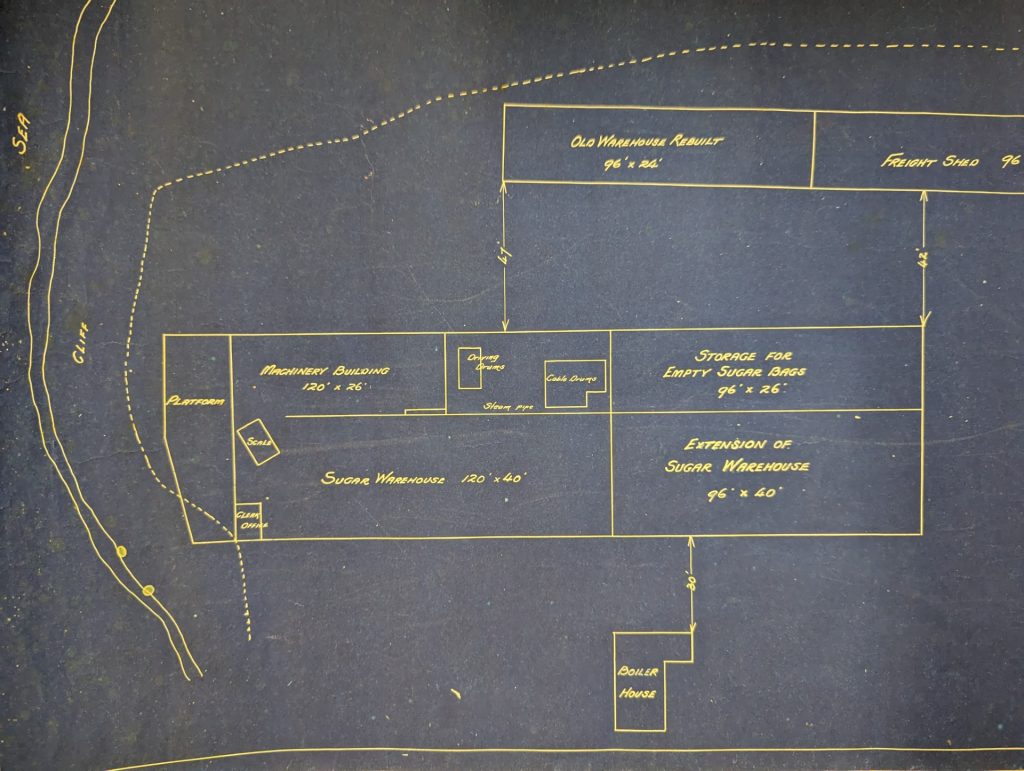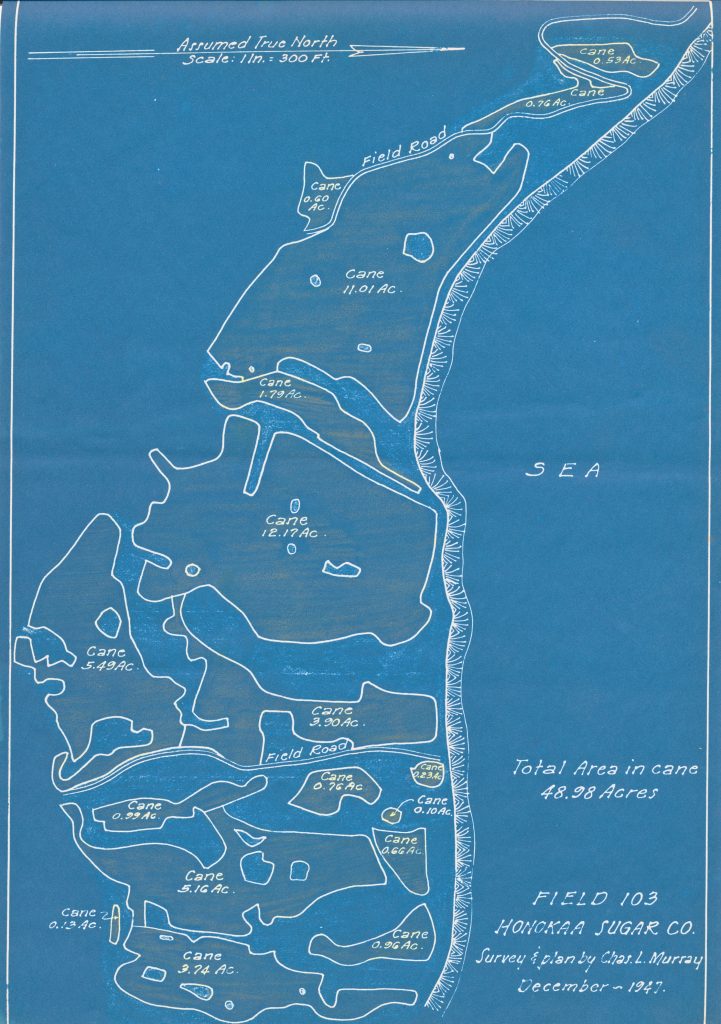Europeans and Americans moved to Hawaiʻi in the early 1800s with visions of agricultural development. Market demand, especially in the U.S., made sugar the most profitable crop. Englishman J. Marsden (b. 1849) and German J. F. H. Siemsen (1848-1888) started the Honokaa Sugar Company in 1876, the first plantation in the district of Hāmākua. With Hawaiian laborers, the men planted the first crop and processed it with a two-roll crusher mill. In 1878, Marsden and Siemsen with German Frederick August Schaefer (1836-1920) organized a new company along with Hawaiʻi-born James Clark Bailey (1846-1891) and Irishman Patrick Michael McInerny (1831-1896).
Over time the company hired Chinese, Portuguese, Japanese, Puerto Ricans, Koreans, and Filipinos as well as a few Russians and Spaniards. Honokaa Sugar Company merged with other companies, finally becoming part of the Davies Hamakua Sugar Company in 1978. It was later purchased by Frances Morgan and renamed Hamakua Sugar Company, which closed permanently after a final harvest in 1994.
The Lyman Museum preserves various records from the Honokaa Sugar Company as part of the Hamakua Sugar Company Records. That corporation consolidated seven original companies: Hamakua, Honokaa, Kaiwiki, Kukaiau, Laupahoehoe, Paauhau and Pacific. To learn more, the Archives is open for research by appointment: https://lymanmuseum.org/archives/.
Note: Hawaiian diacritical marks comprise just two symbols: the ʻokina (glottal stop) and the kahakō (macron). We use them with Hawaiian place names, but do not add them to proper names if a family or a company does not use them.
